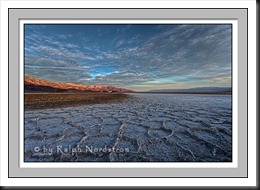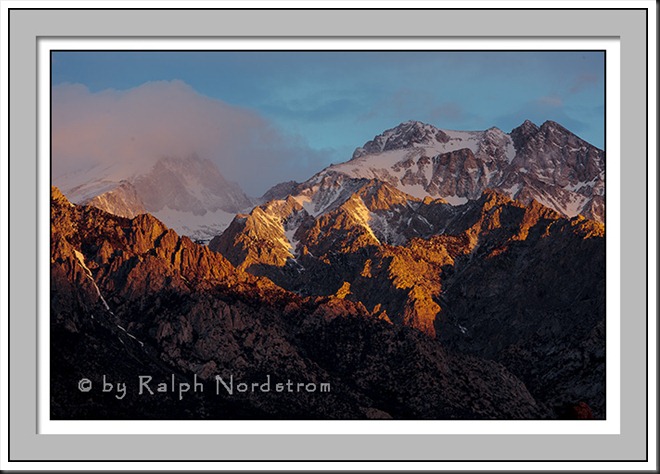A student of mine asked me for help in selecting a telephoto lens – what to look for and what to avoid. I put down a few ideas for him and thought that maybe you might also find this topic interesting.
Sooner or later we all buy a lens or two or five or six. I currently have four lenses in my camera bag – a wide angle zoom (17-40 mm, f/4), a mid range zoom (24-70 f/2.8), my workhorse lens (24-105 mm, f/4) and a telephoto zoom (70-200mm, f 2.8).
I have two ground rules for buying lenses that I have shared with many people.
1. There must be a demonstrated need. In other words, if you can’t realize your vision because you’re missing a particular lens then it’s time to consider adding one. Students, friends and colleagues ask me if I think they should buy a hot new lens. I always ask them, “What would this lens permit you to do that you can’t do with your current lenses?” Often, the answer is that it does nothing new for them, they just think it’s a cool lens.
2. Purchase the best glass you can afford. You will go through several camera bodies in your career but you’ll never outgrow a high quality lens.
So those are the ground rules but what else is there?
3. I prefer zoom lenses. Yes, the lens designers must make compromises to create zoom lenses; which is to say, prime lenses are the very best you can buy. But for me a zoom is essential to composing an image. And the quality of zoom lenses is astounding considering all you get.
4. On the other hand, I avoid massive zoom lenses, the ones that go from 28mm to 200mm or even 300mm. I had one but I gave it away. When the zoom range is that great there’s no way to avoid serious compromises in the quality. So I go for more moderate zoom ranges, which means I need to purchase several lenses to cover the same focal length range.
5. The issue of fast lenses is not so cut and dried. The faster the lens the more costly it is. And it’s a lot heavier. I find that I don’t shoot wide open very often, mostly just for nighttime photography and that’s with my wide angle lenses. But a good friend of mine has a daughter who dances and he photographs her in darkened auditoriums with a hand held telephoto. He uses a 70-200mm f/2.8 and he needs all that speed. My advice would be if you need to pay attention to cost get a slower lens but keep the quality up. But if you have the cash, go for the fast one. That way, when you need it you have it.
6. Another consideration is the filter size the lens takes. All of my lenses take 77mm filters. That way I don’t have to buy a new set of filters for a new lens. If you buy high quality filters you can easily spend an additional $300 on a good polarizer. So you can save some money by getting a lens that can use your current crop of filters.
7. Buy a lens for a full frame camera, even if your camera has a crop sensor. You can always use a lens designed for a full frame sensor on a crop sensor body but the reverse is not always true. And you don’t want to be in the position of having to replace all your lenses if you ever decide to make the move to full frame. As it turns out you can use a lens designed for a crop sensor on a full frame Nikon or Sony body. But realize you give up significant pixel count when you do.
8. If you shoot outdoors your lens’ weatherproofing can become a factor. The high quality lenses will be more weather resistant than the cheaper items.
9. Consider renting lenses if there’s an expensive one that you would rarely use. Or rent a lens you’re evaluating to get a feel for what it can really do for you.
10. If cost is a constraint consider buying a used lens from a reputable dealer. Be aware, however, that good lenses hold their value so don’t expect to get a steal. However, not only will you save a few bucks on the current crop of lenses but you may be able to get your hands on a previous version. Within the past few years Canon has introduced new versions of some of its legendary lenses and the prices jumped $1000 and more. You can save big bucks if you can find the original version.
11. I buy all my lenses online. I have online dealers I trust and can usually save a hundred bucks or so.
12. Beware of zoom lenses much below $1000. In fact, some of the really good ones are in the two to three grand range. (Huge telephoto primes, I’m talking 500mm and 600mm, can set you back more than your total investment in camera gear!) If I was faced with the prospect of buying a $600 lens or one twice that but didn’t have the cash for the expensive one, I’d save my pennies until I could afford the better one.
Bonus Tip: How can you save $1000 or more on a lens? Go ahead and spend the $1000 or more on your first lens. That way you won’t be buying cheaper lenses and working up to the quality one.
I hope you find these tips useful and your next lens is the one you need and provides you joy and satisfaction for years to come.
If you know someone who might enjoy this post, please feel free to share it with them or post it on your social page. The links are at the top.
We do photography workshops. Come on out and join us. Click here to check us out.
You can also check out our photography. Click here.
WordPress Tags: Twelve,Tips,Lens,student,topic,Sooner,workhorse,vision,Students,colleagues,Often,Purchase,designers,length,photography,friend,daughter,auditoriums,advice,attention,cost,cash,Another,size,money,sensor,Nikon,Sony,factor,items,Consider,constraint,dealer,version,Within,Canon,versions,dealers,Beware,fact,Huge,investment,gear,pennies,Bonus,satisfaction,workshops,Come,Click,telephoto,lenses,camera,ones
(1329)


